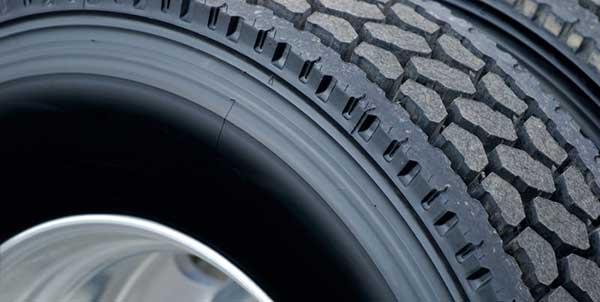In recent years, a growing number of products designed to be used inside mounted truck tires have begun to emerge, leaving fleet managers with plenty of choices. These products are promoted to improve vehicle ride, reduce punctures and keep tires running cool—which will help in increasing casing retreadability and improve fuel economy—while others reportedly reduce the rate of osmosis of air inside the tire.
Commercial fleets naturally have many questions regarding these type of external products for tires. In response, the Technology & Maintenance Council (TMC) of the American Trucking Associations published Recommended Practice 246, titled “Considerations for Products Intended for Use Inside Tires,” which is a good source for additional information.
It is always a good idea to talk to other fleets as to their experience when considering placing external materials inside tires. Working closely with the vendors to ensure that any material placed inside a tire will not have any adverse effect on the tire inner-liner is very important. Also, since the material will be in constant contact with both the tire inner-liner and the wheel, you will need to determine if there are any potential issues such as chemical compatibility, abrasion resistance, and possible corrosion. Also check with your tire and wheel vendors to determine if there are any warranty issues when adding material inside a mounted tire.
Products that are designed to be placed inside tires can be classified into these categories: balancing and ride improvement materials, sealants and coolants. Let’s talk about each.
There are many materials that claim to improve tire balance as the tread wears away. Internal balancers can be liquids, powders, small beads, and other solids. Some materials are added into the tire prior to being mounted, while other materials may be added through the tire valve. A tire that is out of balance is prone to developing irregular wear such as shoulder cupping. When a tire wear is not smooth and even, the tire may be removed prematurely. A tire with uneven wear will also adversely affect fuel economy.
Today’s new tires are manufactured with state-of-the-art equipment. New tire balance is typically very good compared to years ago. If fleets balance their tires using weights, it is usually only on the steer axle tires. Drivers can feel steer tires that are out of balance via steering wheel “shimmy.”
Tire sealants have been available in the marketplace for years. Sealants are designed to reduce tread area punctures and also leaking around the bead area. Sealants are most popular in mixed service and off-the-road service vocations where punctures are the number one issue. Sealant materials may be liquids, gels, semi-solids or even a liquid with suspended solids. They are most effective when the puncturing object penetrates the tread and then goes right back out. When the nail or puncturing object goes out from the tire, it will pull the sealant with it which helps seal the puncture.
If the puncturing object is greater than approximately 1/4 in. in diameter, the probability that the sealant will be effective diminishes. If the nail or puncturing object remains inside the tire it may eventually work back and forth, which may lead to a larger hole.
The last category is coolants. Keeping a truck tire running cool is the secret for improved treadwear and fuel economy and increased casing retreadability. As with balancing materials and sealants, it is important that any coolant material not adversely affect the tire inner-liner or do damage to the wheel.
When working with a vendor that supplies materials that are used inside mounted tires, it is always a good idea to come up with a checklist of appropriate questions regarding the product. Such a checklist should include these questions:
✓ What specific performance claims does the product manufacturer make?
✓ Is the product compatible with the tire inner-liner and wheel surface?
✓ What happens to the product over time?
✓ Does cold or hot weather affect performance?
✓ Is the product most effective in specific service vocations?
✓ Does the product impact mounting or dismounting of the tire?
✓ What is the recommended product removal procedure?
✓ Is the product recyclable?
✓ Is there a list of testimonial fleets you can contact?
The best way to determine if the product you will be placing inside your mounted tires has been effective as advertised is to talk to other fleets who use the product under similar service vocations.














